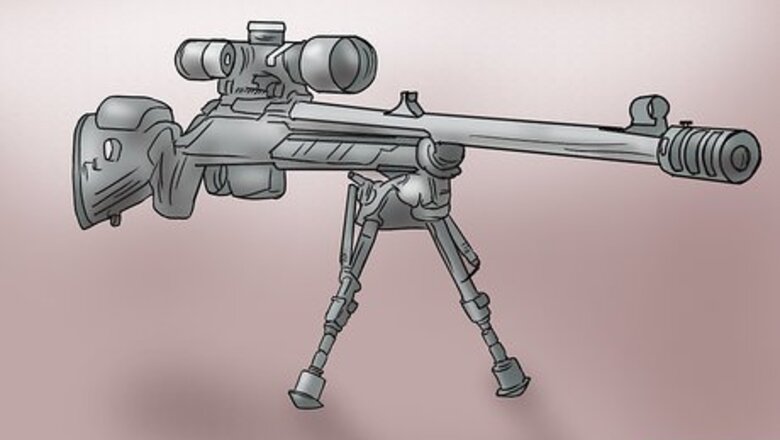
views
Improving Your Long Distance Accuracy
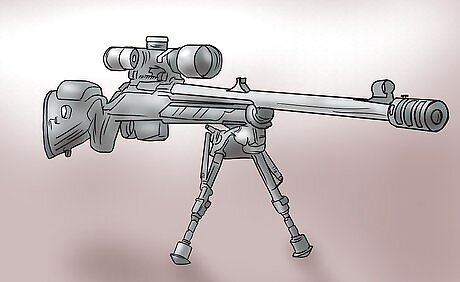
Familiarize yourself with your weapon. Everything becomes difficult under stress, which is exactly why a sniper must become intimately familiar with their weapon. Cleaning and maintaining your rifle of choice is only a portion of becoming familiar with it. You will also need to practice with it enough to learn what types of failures you may be able to expect and how to address them in a field situation. This can only be done by firing the weapon regularly and learning how it handles different situations. Many military snipers sleep with their weapons in field environments. The rifle has to feel like an extension of yourself in order to maximizing your effectiveness with the weapon. Handling your weapon often will make leveling the rifle and capturing good sight picture a matter of muscle memory, allowing you to focus on your environment instead of your actions. There are many types of rifles a sniper may use that include different firing mechanisms and ammunition, based on the situation and the sniper’s preference.

Get comfortable adjusting windage, elevation and parallax. When using a rifle scope there are three adjustments you can make to help ensure your rounds impact the target. The windage adjusts your target’s impact point on the horizontal axis while the elevation will adjust it on vertical one. The parallax adjusts the reticle in your scope’s depth in relation to the target and is not a common adjustment in other forms of sport or competitive shooting. When firing, practice making adjustments to the parallax, windage and the elevation to gain a better understanding of how each adjustment affects the impact point of your round. There are many different variations of rifle scopes that allow you to make adjustments in different ways and in different increments. Use one scope as your primary optic until you are as comfortable with it as you are with your weapon.
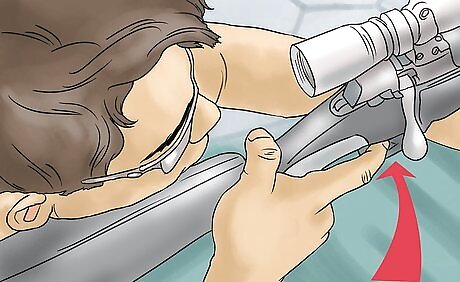
Practice good trigger control. At a distance, pulling a trigger can throw your round off course and result in missing your target. Instead, squeeze the trigger with slow steady pressure until it releases a round. Once the weapon fires, do not immediately release the trigger. Instead, hold it for a one count before letting go. Try counting down from five slowly as you squeeze the trigger to ensure you do not pull the trigger and shift the weapon. Shifting a fraction of an inch at the point of the weapon can result in missing by inches or even feet at the target.
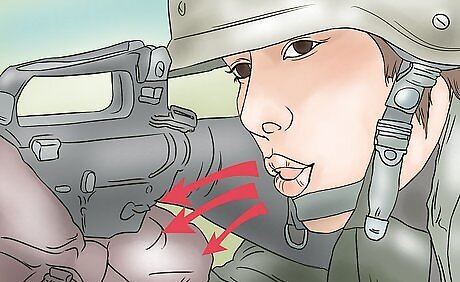
Utilize proper breath control. Your breathing can also have a dramatic effect on the accuracy of your rounds at a distance. In order to fire accurately at long distances, you will need to learn to fire the weapon during the natural pause between exhaling a breath and inhaling a new one. This practice is referred to as “breath control.” Breath out slowly and squeeze the trigger in between breaths. Firing during inhaling or exhaling could shift the weapon slightly, sending it off course.
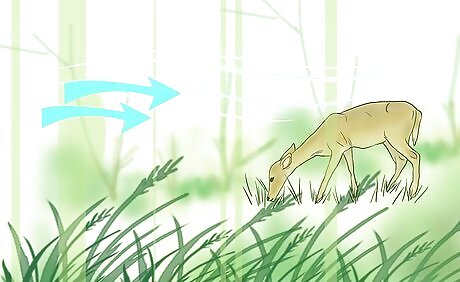
Take wind movement around your target into account. The windage setting on your rifle scope allows you to compensate for cross winds traveling from left to right or vice versa. However, snipers are often firing at distances that can make wind a bigger issue for concern. If the wind is blowing slightly where you are, but far stronger at the point of the target, it may throw off the round. Use binoculars to look for signs of strong wind around your target, and adjust your windage left or right to compensate. If the wind is blowing around you and the target in the same direction, you may need to adjust the windage further than usual to compensate for the wind the round will pass through on the way to the target. Wind traveling in an opposing direction may require reducing your adjustment, as the wind traveling left to right at the target may negate some of the effect of wind traveling right to left around you.
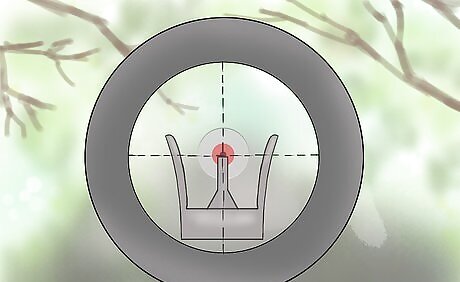
Practice as often and as much with your sidearm as your primary weapon system. Snipers are trained to utilize cover to conceal their location from the enemy once in position, but getting to and from that position can be extremely dangerous. The nature of sniper rifles makes them less effective at close and medium range combat, due to long barrels, different firing mechanisms, and large optics in the way of your line of sight. Snipers carry sidearms, or pistols, to use in close quarters situations when their rifles would be less effective. You should become as familiar and effective with your sidearm as you are with your primary weapon, as it will be your first line of defense in close quarters combat. Proper marksmanship fundamentals affect pistol accuracy as well as the rifle, but it may take more practice to get accustomed to firing a pistol under stress due to a lack of stability and shorter barrel.

Learn to properly utilize cover and concealment. Cover and concealment are two different methods of protecting yourself from the enemy that are best when used together. Cover places actual objects between you and the enemy to stop enemy gunfire from reaching you. Concealment hides your presence from the enemy. When moving, stay conscious of things around you that may provide cover in the event of an enemy engagement. Wear dark or camouflaged clothing to aid in your concealment from the enemy. Common forms of concealment utilized by snipers include face paint, camouflage and even incorporating the fauna and plant life in the area by placing it on or attaching it to their clothing. Proper concealment should stop incoming gunfire. Large rocks, buildings and thick trees could all serve as cover. However, car doors, drywall or plywood will not stop rounds and should not be utilized as cover.
Observing Your Environment
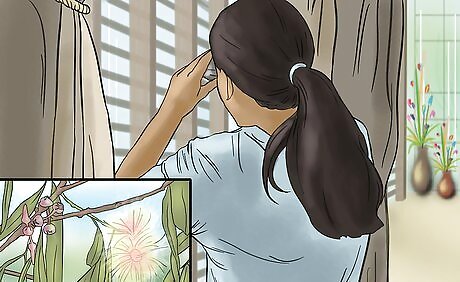
Establish an environmental baseline. Being a sniper is not all about firing at long distance targets; snipers are often responsible for gathering reconnaissance and general operations beyond fortified front lines. Because of the danger of being alone or in small groups with very little support, it’s imperative that a sniper learn to quickly establish environmental norms for their situation. Be conscious of your environment and the sights, sounds and activities that should be normal so you can more readily identify things that aren’t. In a city, the environmental baseline would likely include the sounds of traffic, lots of people conversing, and crowded streets. In a wooded area, the sounds of insects, wind in the trees and far off highways may create the baseline. Pay attention to your surroundings and use previous experiences to inform you as to what to expect.
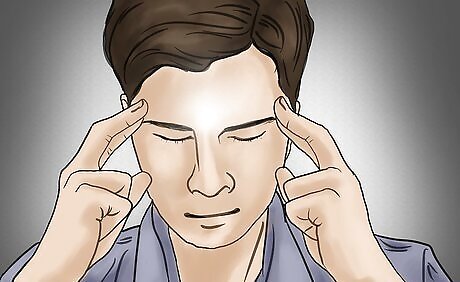
Take note of abnormal behavior. Once you have determined what the environmental baseline is, you can begin to asses any abnormal behavior or circumstances in the area around you. If the insects in the forest suddenly stop making noise, or traffic in the city is suddenly interrupted it likely means there is something out of the ordinary going on. In day to day life, it’s normal to tell yourself that sound you heard was nothing to worry about, but as a sniper forward of enemy lines, you can’t afford to make such assumptions. The tendency to think abnormal things going on will work out fine is called the “normalcy bias” and it can prevent you from reacting to dangerous situations quickly enough. If you notice something out of the ordinary, make note of it but don’t focus all of your attention on it.
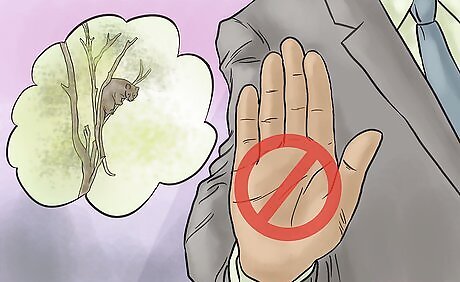
Avoid locking your focus on specific things. Combatting the normalcy bias requires an intense focus on your surroundings, but it’s important not to allow that focus to linger too long on any one thing. If you devote your full attention to one thing in your field of view, you may not notice other risks developing around you. Make note of things you notice, but continue to survey your surroundings for other threats. Focusing on one thing to the detriment of noticing others is referred to as “focus lock.” With your attention held by a possible target in front of you, you may not notice other threats forming behind you. Like driving in a car, you don’t stare at the guard rail hoping not to hit it, but you maintain your awareness of it while looking at the road ahead of you.

Try to predict upcoming events around you. Use the expertise you develop from forming environmental baselines, combatting the normalcy bias and avoiding focus lock to begin to predict the behaviors of people around you. As you observe others, you will find that behavior often fits patterns. By identifying these patterns (such as taxi cabs stopping more frequently than other cars, people jogging when crossing busy streets instead of walking and so forth) you can begin to predict events around you. Once you can form an educated prediction of what should occur in the near future, you will be better prepared to identify risks if things change. By predicting the actions of those in your field of view, you will notice unusual behavior from individuals sooner than by strictly observing them. The more you observe and predict, the better you will become at picking out unusual circumstances.
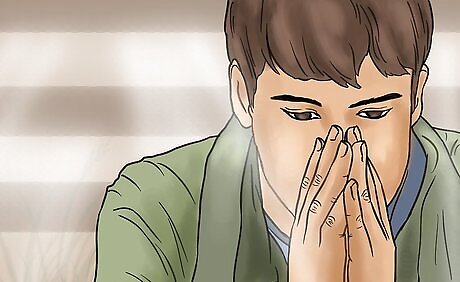
Trust your gut. As a sniper, you will often work in pairs or small groups with very little outside support. Sometimes, you or someone you are with may develop a “bad feeling” about a situation that may be difficult to articulate. Don’t simply disregard these feelings, as your body may be interpreting information you haven’t consciously considered yet. If you or your partner has a bad feeling about your location or situation, it’s often best to act on that feeling. You may have unconsciously noticed something that increases the risk factor of your current situation, but failed to consciously consider it. Finding a new vantage point is always better than compromising the mission or losing your life because you disregarded your gut feeling.
Developing Mental and Physical Toughness

Stay calm. The vast majority of a day in the life of sniper in the field is waiting. This time, often spent alone or with one other person, is often silent and in some cases even moving can compromise your position and put you and your team at risk. It is essential to stay calm as a sniper, whether its during movement to or from an objective, while waiting to conduct reconnaissance, or in the face of the enemy. Keeping a cool head will allow you to properly utilize your training and expertise to handle the situation at hand. There are many stories of snipers being surrounded by enemies in combat situations that survived because of their ability to remain calm and concealed as the enemy passed.

Maintain focus on the objective at hand. With all the waiting around one is apt to do as a sniper, it can be easy to lose sight of what you’re there to be doing. After three days of seeing nothing, your mind may begin to wander instead of remaining focused on your objective. Combat this loss of focus by frequently reminding yourself of your objectives and how important it is to your team’s safety that you stay attentive. Getting too comfortable and allowing your mind to drift is a form of complacency. Complacency kills in a combat zone, as you must always be aware of your surroundings. Mission accomplishment is, and should always be, the number one priority of a sniper.

Train your body for the rigors of combat. Although there may be hours of waiting around, being a sniper also means moments of extreme physical stress. Because of this, physical fitness is paramount for a sniper. Covering ground quickly to put you and your team in a better position to achieve your objectives, or to get to an extraction point means having the cardiovascular strength to run quickly for extended periods of time. Carrying all of the gear necessary for your mission will also require physical strength. Developing a strong body will help you to adjust to stressful combat situations, recover from injuries, and aid team members if they are injured. Snipers must be among the most physically fit combatants on the battlefield. Incorporate a good deal of running and some weight training into your workout regimen as a sniper.
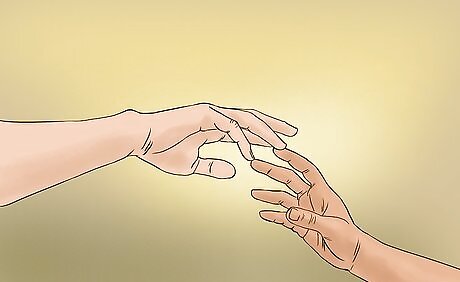
Distance yourself emotionally. Being a sniper in a combat zone will likely mean having to make the decision to end a life. There is no universal strategy for coping with this choice, or the feelings that may arise as a result. However, distancing yourself from your target emotionally can help to lessen the emotional repercussions of killing another person in defense of your country. Chris Kyle, a highly decorated Navy sniper, often taught people to focus on the lives they were saving by engaging the enemy, rather than on the lives of the enemy that they were taking. Although you may spend a significant amount of time observing your target, it’s important not to allow yourself to become attached to them.
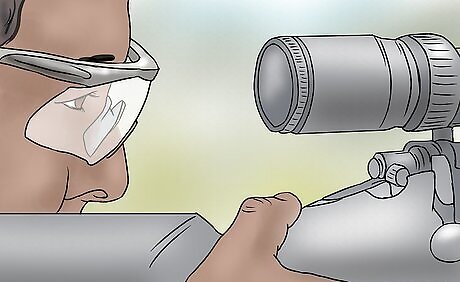
Practice often and with intensity. Being a sniper means long periods of inaction followed by infrequent and extremely intense moments of action. It can be difficult to predict how a person may react in a firefight, but you can minimize the chances that you will make a mistake by practicing every element of your craft frequently and with the same intensity you might in an actual firefight. This includes firing your weapon, exercising and learning new skills. By practicing as though you are in a combat situation, you will be better prepared to handle one when it arises. Just like playing sports, frequent practice can help you to do the things you need to do even when the situation around you is hectic. By training how you would perform in a real scenario, you can help your body adjust to the stresses of combat ahead of time.


















Comments
0 comment